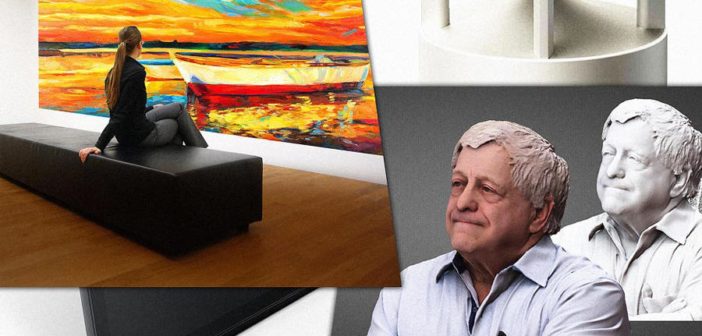We spoke to designers in attendance at this year’s Consumer Electronics Show about the products they were most looking forward to and why.
This year’s Consumer Electronics Show brought 170,000 people to the city of Las Vegas to peruse the latest tech offerings under the fluorescent lighting of the Las Vegas Convention Center. For technology companies, the trade show offers a chance to show off what they’ve been working on. For fans, it’s an early glimpse at the products that will grace store shelves this year. And for reporters, it’s a convenient—if overwhelming—overview of where consumer tech is going.
For designers? It’s tougher to say. Many of the industrial designers who helped create the products on display are in attendance, of course; most of them are working for or with big companies like Sony, Ford, and LG. But one of the biggest trends at this year’s CES had little to do with hardware. Rather, it was the integration of voice recognition software—most notably, Amazon’s Alexa—into just about everything, from home appliances to innocuous robotsto cars. In other words, software outshone hardware this year.
Yet we went digging for interesting and beautiful design objects, through thousands of booths and among dozens of LED screens, too-loud ambient music, blinking robots, and hoards of glassy-eyed, lanyard-clad people, all in the middle of one of the loudest, brightest cities on earth. And we found them—along with designers who shared what caught their eyes on the convention floor. Their comments offer a glimpse at the technology that will influence design over the next year. Here are a few takeaways.
SONY IS BACK
One name we heard a lot at CES from designers? Sony. “As a young designer in the ’80s and ’90s, Sony was the brand that had the most inventive, high-quality products with the coolest industrial design,” said product and interaction designer Max Burton, who runs the San Francisco-based firm Matter, in an email after we met up at CES. After its design slipped over the past two decades, the company is making a comeback.
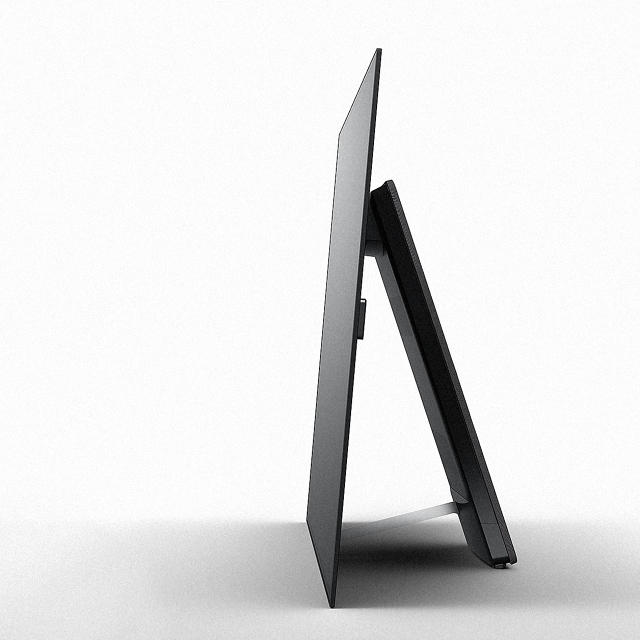
[Photo: Sony]
This year, the company released a wafer-thin Bravia OLED TV, which measures just a few millimeters thick and mounts onto a wall. The thinness allows these screens to more seamlessly integrate into any environment without turning your living room into a sports bar. The thing that sets Sony’s TV apart from other slim offerings from LG and Xiaomi is that it integrates a speaker into the display itself—significant, Burton explains, because while thinner TVs may look better, they typically end up sounding worse.
Speakers require a certain amount of volume in order to move air around as part of the process that produces sound. The more room for air to move, the higher quality the sound. Sony’s solution was to have the “entire surface display act as a diaphragm,” as Burton puts, allowing the screen to move back and forth, imperceptibly, moving the air within the display. This makes for a sharp-looking, un-intrusive TV, without sacrificing sound quality.
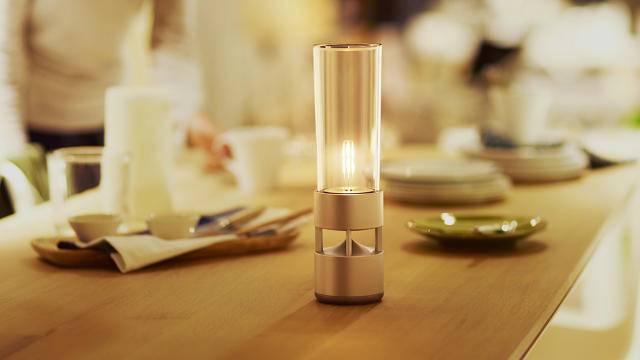
[Photo: Sony]
Another new Sony product with unusual audio tech was its Glass Sound Speaker, a favorite of Hamish Smyth, partner at the design firm order. The speaker is a handsome and portable glass lantern with a built-in, super-thin woofer. It’s easy to imagine why a two-in-one speaker-light would be convenient for camping, dining outdoors, even for carrying from room to room in your house—but the glass cylinder encircling the light has another function, too: The vibrations in the glass produce a clearer sound.
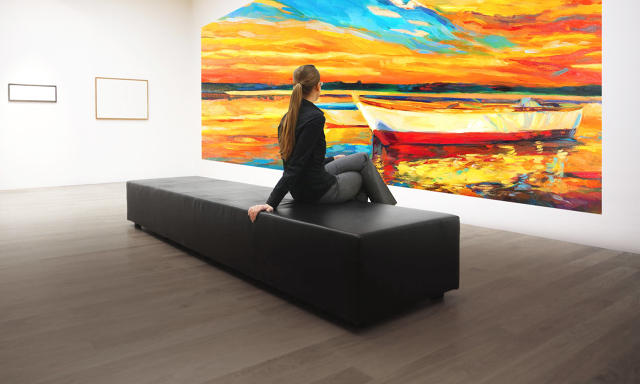
[Photo: Sony]
Both Smyth and Burton noted they were impressed with the Sony Cledis, a modular display system built from a series of blocks that can be arranged at any height or width. Whereas other huge displays are typically comprised of several monitors, each with their own frames that create an distracting grid, the Cledis is totally seamless. As a graphic designer, Smyth is always on the lookout for technology that would be helpful for signage and museum projects, and the ability to click together panels to make a screen of any size would be hugely convenient—if still too expensive—for temporary installations or exhibitions.
Burton says that alongside the individual stand-out products, he was impressed by Sony design as a whole this year: “It seems in the past decade that many other companies such as Apple and Google had completely overtaken Sony. But now Sony is clearly back.”
THE LATEST INTERFACE? PROJECTORS
Sony also showed off prototypes that are still in development at CES—for example, Xperia, a projector that can beam a touchable interface onto any surface. It will effectively turn your table or wall into a giant touch screen, without any need for glass displays. Pinch, swipe, or click on the 21-inch projected image and it behaves just like a phone or tablet. The projector also talks to other internet-connected devices at home, so you can adjust lighting, temperature, and music via projected controls on your wall. When you’re done, just shut down the projector and they disappear.
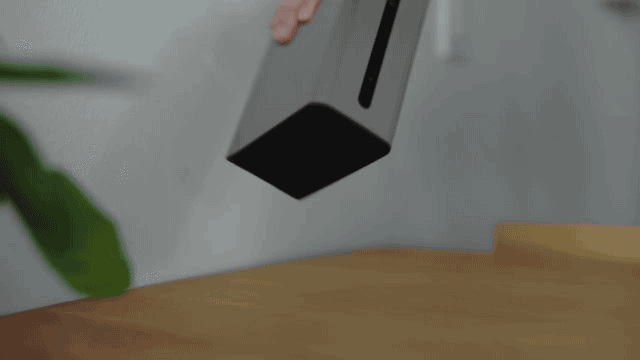
“As a designer I think it’s astonishing because it revolutionizes conventional physical input methods such as knobs and switches, and replaces it with a simple projected light,” Burton says. “As a self-professed minimalist, it declutters our homes and lives. It’s there when you need it and gone when you don’t.”
Meanwhile Mark Rolston, founder of Argodesign, sees projectors like the Xperia as necessary tools for a more sophisticated wave of smart home functionality to take hold. Instead of IoT devices like smart fridges, mirrors, and trash cans, Rolston imagines us living in smart rooms, where voice activation is integrated into overhead lights, which light up as interfaces. We won’t be barking voice commands at objects like Echo; rather, smart-home technology will be integrated into the architecture of the house itself.
Rolston has been exploring this idea for years, most recently with his team at Argodesign through a project called Interactive Light: essentially, a touch-sensitive screen that can appear on any surface of a home. The projected interface could display cooking instructions on a cutting board, or pull up emails directly onto the wood of your office desk. The project is just a concept, but products like Xperia are first steps to making that type of ambient computing a reality. “To really cross that threshold,” says Rolston, “we need to make laser projection more common.”
For interaction designers, the potential of projected surfaces poses an interesting design challenge—one that’s arguably more compelling than the challenges faced by industrial designers working on hardware for the current onslaught of IoT devices. Burton says that products like wearables, drones, and TVs feel stagnant in comparison.
“Unless there is revolutionary development in some form of technology—such as low-power or self-powered devices, or super-micro components to make products much smaller—there is little to distinguish one product from another apart from styling,” says Burton. “As a designer, this might seem like a good opportunity for my business, but I don’t want unnecessary landfill for pointless products.”
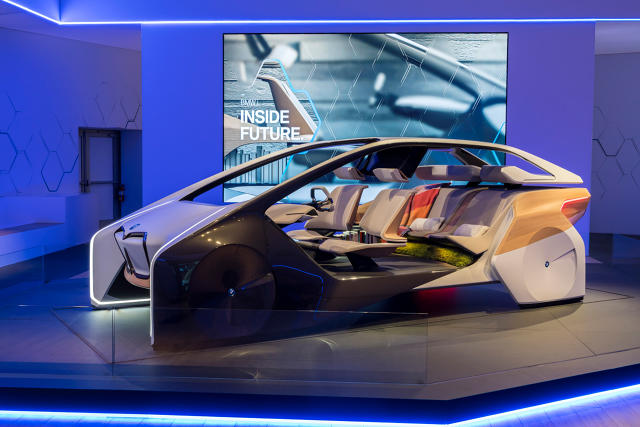
[Photo: BMW]
THE CAR AS AN INTERFACE
Other experimental, projection-based interfaces at CES included holographic controllers from car manufacturer Denso. Though still in the conceptual phase, Denso’s controls have haptic feedback, so when you push a button on a projected dashboard you feel a little push back—just as you would pushing a physical button on a physical dashboard.
For industrial designer Nick Scappaticci, founder and chief executive officer of the interactive design firm Tellart, this technology could prove handy for achieving ADA compliance in the environments they help create. “How do we use touch screens to allow people with disabilities to utilize the same interfaces?,” he asks. For people who can’t drive a car, or who can’t grip a controller, haptic displays can offer a comparable experience.
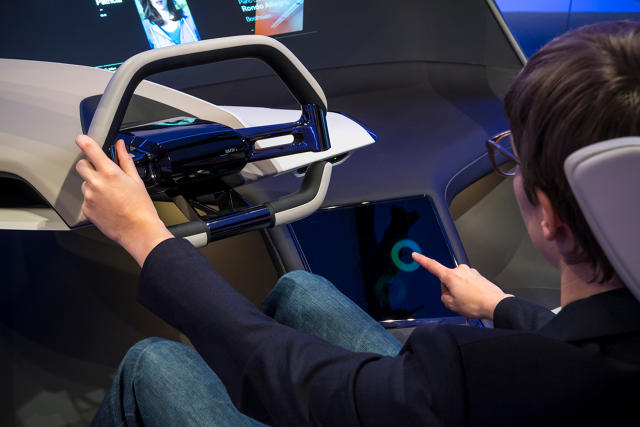
[Photo: BMW]
For many, though, pushing a floating hologram of a button that requires the exact same action as pushing a physical button will likely prove more novel that useful. Rolston questions why the design of future cars is not being completely rethought, since self-driving cars promise to change the experience so completely. BMW is the one car company he sees doing that this year, with its i Inside Future concept car. In BMW’s vision of the future, cars will come equipped with HoloActive Touch, a floating display that does not feature dashboard buttons or controls as we know them them. Instead, the hologram plane reacts to gestures like swiping, and registers the touch of fingertips.
Moreover, the interior of the car—with a shelf for books and plants underneath the rear seats, and even a throw pillow propped up on the Eames-esque car seats—is designed more like an apartment than a car. The concept focuses on what we’ll want to do with our commuting time once the car has taken over the task of driving.
Rolston finds this kind of design overhaul not only refreshing but necessary if design is going to keep up with emerging self-driving car technology. “Automative vernacular is a design language that was solidified around 1910; it took us a long time to wrestle with the language of the car,” he says. “There are lot of automakers [at CES], and they’re using a lot of big words, but what they need is to have the design commitment to unwind the vocabulary of design and transportation,” for this new era of transport.
UBIQUITOUS 3D SCANNING
3D scanning devices—many of which made appearances at CES—may be less revolutionary on a societal scale than autonomous vehicles, but they’ll still prove to be important tools for many designers.
Scappaticci liked Bellus 3D, a facial scanning device small enough to attach to your phone. For anyone who uses 3D-scanning technology to produce artwork, models, characters in VR games, or the like, the Bellus camera is a boon because it’s extremely high quality on a very small scale. “We’ve been playing with 3D scans with multiple cameras for a long time,” says Scappaticci. “Just to see the quality that can be achieved now with such a small device is really spectacular.”
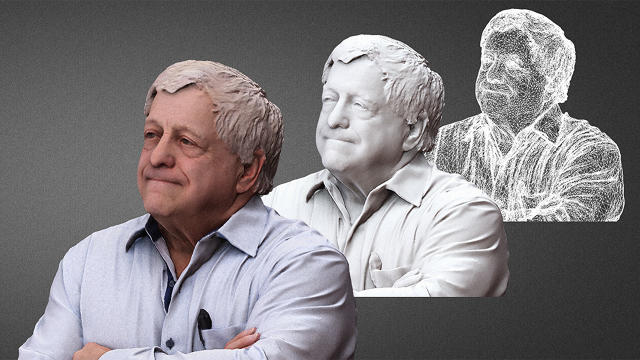
Burton was impressed by another 3D-scanning technology called Solidiphy, a scanner and printer by Cannon that lets users make miniature 3D prints of themselves. While creating a figurine in your likeness may not seem like the best use of advances in 3D-scanning technology, Burton imagines it as an alternative to photography—a new way to “capture yourself in time,” as he puts it. “My fellow Matter designer Josh On thought it would be amusing to scan yourself once a year, almost like a traditional school portrait,” he says. “You would have a series of scale models that tracked your growth and eventual decline: from small to tall and erect, to bent over and eventfully dead.”
Burton’s allusion to the chart of human evolution—from hunched-over ape to upright human—is an apt image to keep in mind at CES, where so much of the technology on view has yet to reach its full potential. As Farhad Manjoo put it in his New York Times article last week, we’re living in a “prototype world,” just at the cusp of significant technological breakthrough; the products themselves aren’t quite there yet. As Rolston and Burton suggest, it will take designers to get over the hump—thinking not just about the next gadget, interface, or car, but about pushing the boundaries of what those things might look and act like in the future.
Once the tech has matured, it will be up to designers to remove the friction between cutting-edge products and the average consumer—both by making them easier and more enjoyable to interact with, and by communicating their worth to the people who will use them.
This article first appeared in www.fastcodesign.com
Seeking to build and grow your brand using the force of consumer insight, strategic foresight, creative disruption and technology prowess? Talk to us at +9714 3867728 or mail: info@groupisd.com or visit www.groupisd.com

